Haridwar
Haridwar, literally means The gateway to the Gods. It the place where the river Ganga descends to the plain. A Gateway to the four pilgrimage of Uttarakhand, Haridwar is variously mentioned as Mayapuri, Gangadwar, Mokshadwar in the ancient Hindu scriptures and epics. A major Shaktipeeth from time immemorial, the place is believed to have both sanctified by the powerful trinity of Hindu mythology – Brahma, Vishnu and Mahesh. This is why the place has been a ever-refreshing mystic venue for the purification of the mind, body and soul. The Kumbh Mela, happening once every 12 years and the ArdhKumbha Mela (Coming once every six years) are big draws.
Haridwar is very much associated with the legends in Hindu philosophy. In order to purge the earth of its sins, it is said the a king named Bhagirath brought river Ganga from heaven to earth. Haridwar is also very popular among both foreign and indigenous tourists because of the different types of alternative treatment facility that it provides. Interestingly enough more and more people are turning towards Ayurveda and Yoga. In Haridwar, you will get some excellent Ayurveda and Yoga institute. The city of Haridwar is only 10 km away from Rajaji National Park. If you are a wildlife lover or a die-hard adventure maniac, make sure that you visit this wonderful place. Situated in the state of Uttarakhand, the city is easily accessible by air, road and rail. Haridwar is only 214 km from Delhi and 386 km from Agra. If you wish to journey by car, it will not take more than just a few hours to reach here. Haridwar also has a railway station and is well connected by rail. The nearest airport is just 35 km away at Dehradun. If you are planning to spend a vacation away from the din and bustle of daily life, this is the place where you should be.

Haridwar
Haridwar located in the foothills of the Himalayas, represents the point where the Ganga reaches the plains. Haridwar is an ancient pilgrimage site, held in reverence for centuries. The Chinese pilgrim Hyuen Tsang who visited India in the first millennium CE, describes Haridwar as Mayura, on the eastern banks of the Ganges. Several temples and ashrams dot this town and a visit to Haridwar is like stepping into a totally different world. Legend has it that Bhagiratha, brought the Ganges into the earth, and into this point where his ancestors were burnt to ashes by the curse of the sage Kapila. Kapilastaan, a spot in Haridwar is pointed to as Kapila hermitage. Haridwar was once known as Gangadwara. Haridwar (and Rishikesh) represents the gateway to the Himalayan pilgrimage shrines of Badrinath and Kedarnath. The pilgrimage to the Himalayan shrines begins only when the sun reaches the zodiac sign of Aries. Haridwar is also the site of celebration of the Kumbha Mela, once in twelve years, when Jupiter transits to the zodiac sign of Aquarius.
The five sacred bathing spots in Haridwar are Gangadwara, Kankhal, Nila Parvata, Bilwa Theertha and Kusavarta. The main ghat at Haridwar is known as Hari-ki-Pairi (known for a footprint of Vishnu on a stone in a wall). Nearby is the Gangadwara temple, the most important of the several temples that dot this town. The Ganga Aarti which is celebrated at 7 pm each night, is a spectacular sight, when the aarti ceremony is performed at all temples in Haridwar at the same instant (see image above). Hundreds throng to the ghats at Hari-ki-Pairi to participate in this festival. Offerings of lamps and flowers are made to the river immediately following this ceremony and it is a moving sight to watch hundreds of miniature lamps float along the river. Near Haridwar are the towns of Mayapuri and Kankhal. Kankhal houses the Daksheswara temple, said to be the site of Daksha yagna, which was destroyed by Shiva.

Har Ki Pauri
It is also known as Brahmakund and it is believed to be the place where divine nectar fell from the pitcher. It is the site for the famous Kumbh Mela which is celebrated in 12 years. Large number of devotees comes especially to Haridwar to take a holy dip in the Ganga River. At twilight, when evening aarti is performed the reflection of the golden diyas that keep floating on the river offers an enchanting view of the ghat to the visitors. This sacred Ghat was built by King Vikramaditya in memory of his brother Bhatrihari, who is said to have meditated on the banks of Ganga in Haridwar.
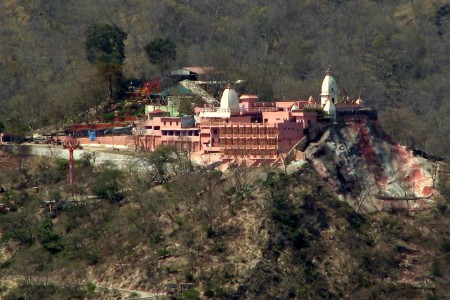
Mansa Devi
Mansa Devi TempleOne of the most visited temples in Haridwar, Mansa Devi Mandir occupies a place on top of the Shivalik hills. The temple is dedicated to Goddess Mansa Devi, believed to fulfill the wishes of those who visit here. It is a tradition with the devotees to tie sacred threads around the tree that stands within the premises of the Mansa Devi temple. From the temple, one can have heart stirring views of the Haridwar town. Along with Chandi Devi temple and the Maya Devi temple, it completes the Vidyapeeth Triangle.
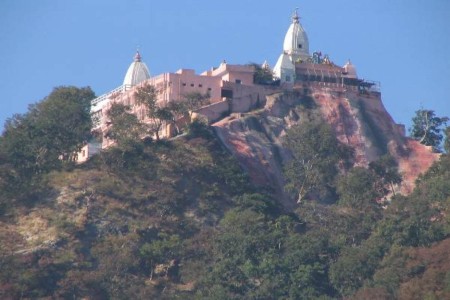
Chandi Devi
The temple stands in dedication to Goddess Chandi. One of the most ancient in the country, the temple can be reached either by a ropeway ride or by undertaking a steep climb, that takes up around 45 minutes. The rituals at the temple begin as early as 4 am in the morning. Visitors are required to strictly follow the dress code before entering the premises of the Chandi Devi temple.
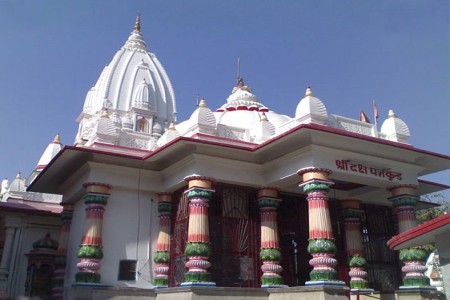
Daksha Mahadev Temple
The temple is situated towards the south of the Kankhal town. Built by Queen Dhankaur in AD 1810, the Daksha Mahadev Temple is the site where Daksha performed a yagna (a Hindu ritual to invoke gods and seek their blessings). In the Hindu mythology, Daksha Prajapati is the father of Sati, the spouse of Lord Shiva. The temple is just a few minutes drive from the railway station.
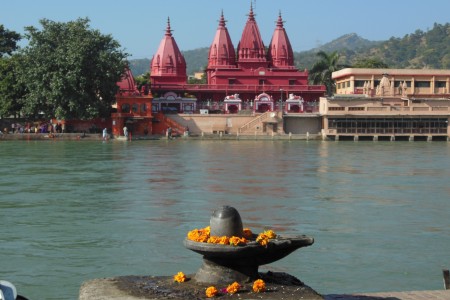
Maya Devi
Mansa Devi TempleOne of the most visited Dedicated to goddess Maya Devi, the temple is a major attraction for all visitors to Haridwar.The temple is counted as one of the shaktipithas in India. According to the Hindu mythology, it is the place where the heart and navel of goddess Sati fell down, while Lord Shiva was carrying her burnt body. Numerous festivals are held at the Maya Devi temple in keeping with the customs and traditions.

Parad Shivling
The mythological site is located in the historical town of Kankhal, at 6 km from the town of Haridwar. The Parad Shivling remains enshrined inside the premises of the Harihar Ashram in Kankhal. Weighing 150 kg, the shivling is major pilgrimage site for Shaivites. Devotees worship the shivling to seek the blessings of Lord Shiva.
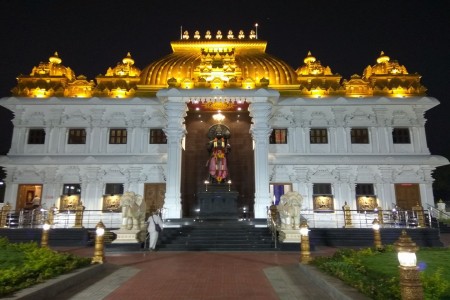
Bharat Mata Mandir
5 km north of the center. Dedicated to Mother India, this is half temple, half nation building exercise, with seven floors stacked with deities, saints, and secular heroes of all Indian faiths.
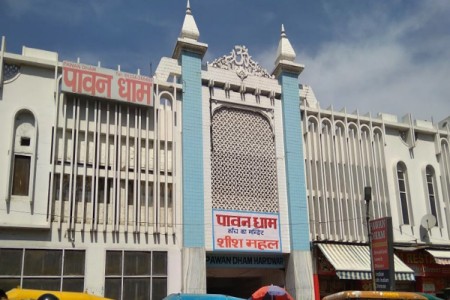
Pawan Dham
A modern temple, made entirely of glass pieces, Pawan Dham is now a popular tourist destination. The temple complex was constructed by the effort of Swami Vedantanand Ji Maharaj and the institute located there is growing under the leadership of Swami SahajPrakash Ji Maharaj. People from Moga in Punjab have put considerable efforts and money to erect this place.

Ramanand Ashram
Situated in shravan nath nagar of the town near railway station, this is the main ashram of Ramanand Sampraday in Haridwar. Mahant Bhagwan Das is the chief of this ashram.

Patanjali Yogpeeth (Trust)
Patanajli yogpeeth is situated on Haridwar – Delhi Highway. this is a yoga institution and research center of Swami Ramdev. every day 1000 of person come here for yoga n other purpose. This is one of the best place in Haridwar to see
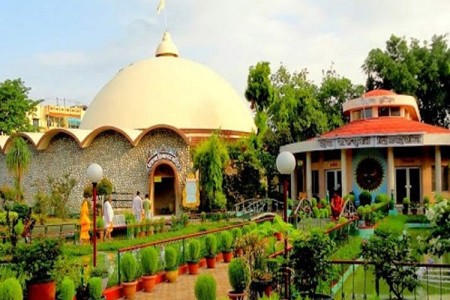
Shantikunj
Shantikunj is the headquarter of famous spiritual and social organisation All World Gayatri Pariwar (AWGP) established by Pt Shriram Sharma Acharya. Its located at a distance of 6 Kilometers from Haridwar railway station towards Rishikesh/Dehradun on NH58. At the bank of the holy Ganges and between the Shivalik ranges of the Himalayas, its also a place of attraction for tourists as well as seekers of spiritual guidance.

Rajaji National Park
It is gifted with immaculate beauteousness covering an area of 820sqkms on the edge of the Doon Valley. It is situated around 10kms from Haridwar. Rajaji National Park was established in 1996 and has over 23 species of mammals and 315 avifauna species. It is a safe haven for panther, bear, chital, elephant, tiger, sambar, wild boar, barking deer, python, monitor lizard etc. Elephant Safari is also available at Chilla and Dholkand.

Haridwar Ganga Arti
Haridwar located in the foothills of the Himalayas, represents the point where the Ganga reaches the plains. Haridwar is an ancient pilgrimage site, held in reverence for centuries. The Chinese pilgrim Hyuen Tsang who visited India in the first millennium CE, describes Haridwar as Mayura, on the eastern banks of the Ganges. Several temples and ashrams dot this town and a visit to Haridwar is like stepping into a totally different world. Legend has it that Bhagiratha, brought the Ganges into the earth, and into this point where his ancestors were burnt to ashes by the curse of the sage Kapila. Kapilastaan, a spot in Haridwar is pointed to as Kapila hermitage. Haridwar was once known as Gangadwara. Haridwar (and Rishikesh) represents the gateway to the Himalayan pilgrimage shrines of Badrinath and Kedarnath. The pilgrimage to the Himalayan shrines begins only when the sun reaches the zodiac sign of Aries. Haridwar is also the site of celebration of the Kumbha Mela, once in twelve years, when Jupiter transits to the zodiac sign of Aquarius.
The five sacred bathing spots in Haridwar are Gangadwara, Kankhal, Nila Parvata, Bilwa Theertha and Kusavarta. The main ghat at Haridwar is known as Hari-ki-Pairi (known for a footprint of Vishnu on a stone in a wall). Nearby is the Gangadwara temple, the most important of the several temples that dot this town. The Ganga Aarti which is celebrated at 7 pm each night, is a spectacular sight, when the aarti ceremony is performed at all temples in Haridwar at the same instant (see image above). Hundreds throng to the ghats at Hari-ki-Pairi to participate in this festival. Offerings of lamps and flowers are made to the river immediately following this ceremony and it is a moving sight to watch hundreds of miniature lamps float along the river. Near Haridwar are the towns of Mayapuri and Kankhal. Kankhal houses the Daksheswara temple, said to be the site of Daksha yagna, which was destroyed by Shiva.
